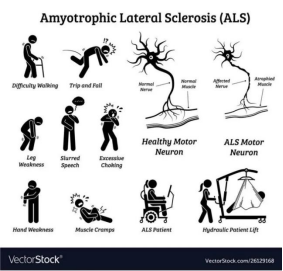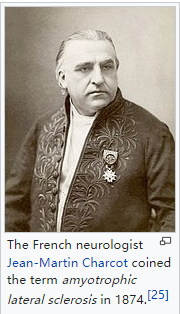
Ice Bucket Challenge
In 2014, an activity involving the pouring of a bucket of ice water over a person's head went viral on American social media. The activity requires participants to either film videos of themselves being poured with ice water or donate a certain amount to fund cancer research.
Then the event was named "The Ice Bucket Challenge" by NBC, but it failed to attract much attention at that time.
By the summer of 2015, some American sports stars reintroduced that event and had the event related to ALS. There was a rule of the activity: the person who completed the challenge could nominate another three people to continue the challenge, so the movement went viral immediately. More and more celebrities actively or passively participate in the ice bucket challenge. The nominees either accept the challenge within 24 hours or choose to donate to fight ALS. The then U.S. President Barack Obama chose to donate.
Most celebrities were happy to do both, such as Justin Bieber, LeBron James, George Bush, Bill Gates, Tim Cook, Elon musk, Kobe Bryant, Ronaldo, Neymar, Hamasaki, etc.
The numbness and weakness of being poured with ice water is what ALS patients are experiencing of all time. According to data, the event raised more than $100 million in 2014. Not only did it achieve the goal of raising fund, but also promote the awareness of the disease amyotrophic lateral sclerosis (ALS).

So, what is ALS, which raises so much attention among celebrities?
Main Symptoms
Amyotrophic lateral sclerosis (ALS), also known as motor neurone disease (MND), is a neurodegenerative disease that results in the progressive loss of motor neurons that control voluntary muscles. ALS is different from Parkinson's disease. The neurons affected by Parkinson's disease are dopamine neurons in the brain, which will not directly cause muscle atrophy. The average life expectancy after diagnosis is two to five years.
The average survival time of ALS patients after diagnosis is only 2-4 years. During this period, the disease worsens rapidly and the symptoms are very obvious.

Famous People Who Have or Have Had ALS
Stephen Hawking, a famed physicist, was diagnosed in 1963 and died in 2018 at the age of 76. Being confined to a wheelchair for 55 years, his grit and tenacity inspired people all over the world.

Stephen Hawking
(1942-2018)
He was only 21 when he was diagnosed, which was undoubtedly a blow to young Hawking. However, he was not frightened by the disease. Not only did he write popular works such as A Brief History of Time and The Universe in a Nutshell, but also he made great achievements in the study of quantum cosmology and black holes.
Hawking has no cognitive impairment and normal mind, so he can continue to benefit mankind after his illness.
Another ALS patient who died in 2018 was Stephen Hillenburg. His name may not be familiar to many people, but his work SpongeBob is popular all over the world. Helen Berger is a versatile marine biologist and animator, as well as a successful businessman.

Stephen Hillenburg
(1961-2018)
He was diagnosed at the age of 56 in 2017 and died a year later.
History
In 1824, British doctor Charles Bell described in detail a disease that caused muscle atrophy and led to the death of patients, but it was not accurately defined as ALS. However, from the symptoms recorded at that time, it can be determined to be ALS.
45 years later, the connection between the symptoms and the underlying neurological problems were first described by Jean-Martin Charcot, who initially introduced the term amyotrophic lateral sclerosis in his 1874 paper.
Although the disease is fatal and the symptoms are very serious, the overall incidence rate is not high, so the society is very strange to the disease except the patients and their families.


In 1939, Lou Gehrig, an American professional baseball first baseman for the New York Yankees, nicknamed "The Iron Horse", delivered a farewell speech and left the stadium that had created countless records.
In fact, he had felt the decline of muscle strength six years before his retirement, and his condition worsened year by year. He had to retire until he couldn't insist at all. Finally, he died of ALS in 1941 at the age of 39. The flag in New York City flew at half-mast after his death and Gehrig's life was made into a film The Pride of the Yankees the following year. Not only did his accomplishment being remembered by American people, but also the disease that eventually led to his withdrawal. ALS is now commonly referred to in North America as "Lou Gehrig's disease".
RDDC Aids the Research of Rare Diseases
The Rare Diseases Data Center (RDDC) was developed by Research Institute of Tsinghua, Pearl River Delta (RITPRD) and assisted by Cyagen Bioscience.
RDDC has collected and sorted out data and information about genes, mutations, phenotypes and animal models of various types of rare diseases from international public biological resources, aiming to present them in a visual way. At present, it has collected over 20,000 gene information and 14,000 disease information!
Users can not only better understand the information of corresponding rare diseases, but also can take advantage of various AI tools to predict pathogenicity and RNA splicer, so as to help speed up the diagnosis and development of treatment research of rare diseases.
Click here to learn more.
*Statement: RDDC data and tools are only for scientific research and are only for reference, and cannot be used as the final conclusion of medical diagnosis and evaluation.
1. http://thebuzztrend.blogspot.com
We will respond to you in 1-2 business days.